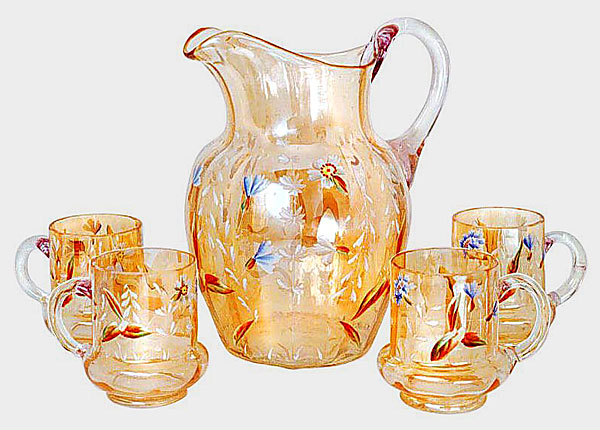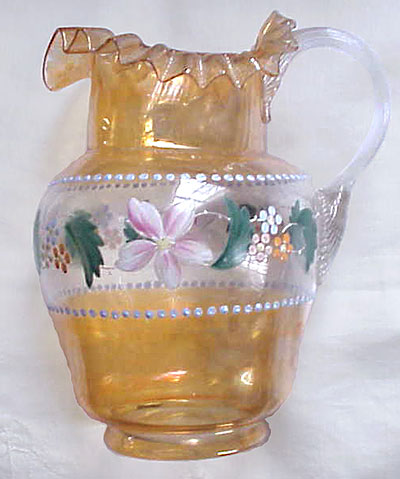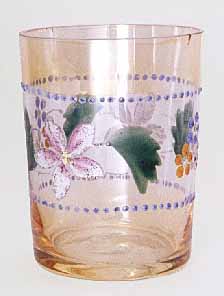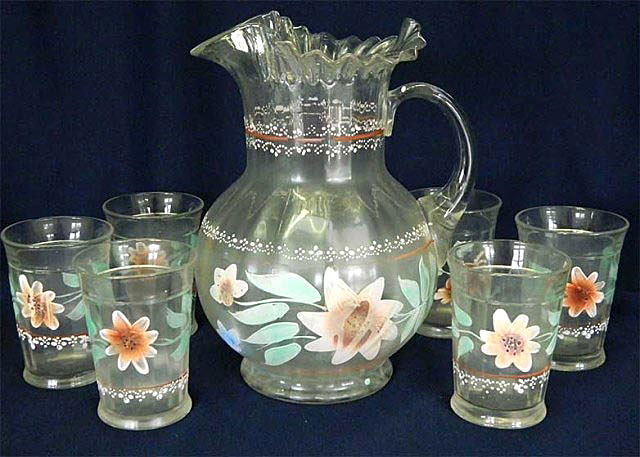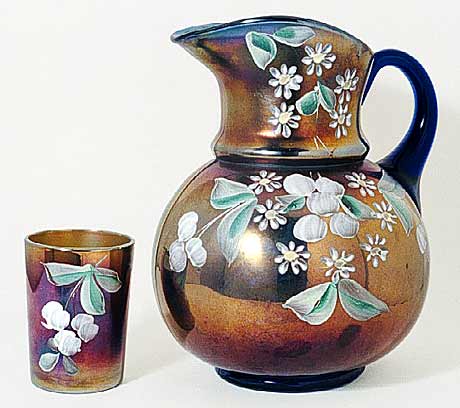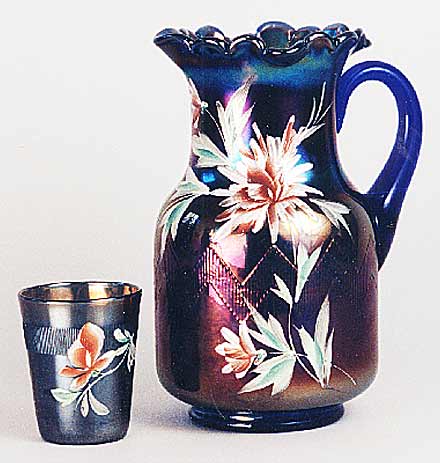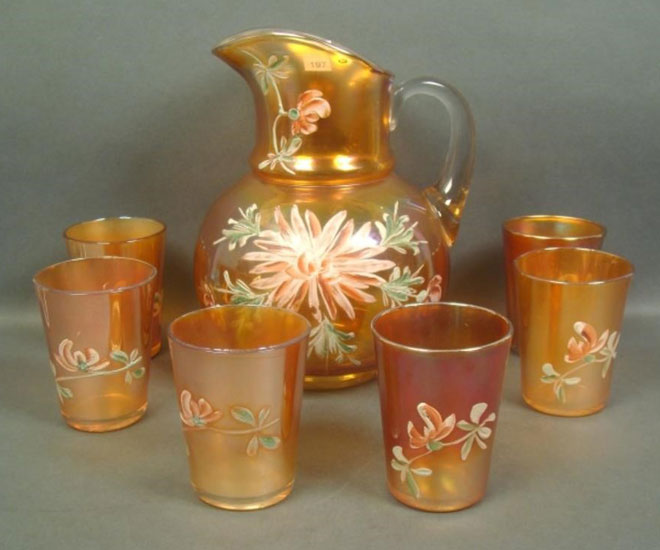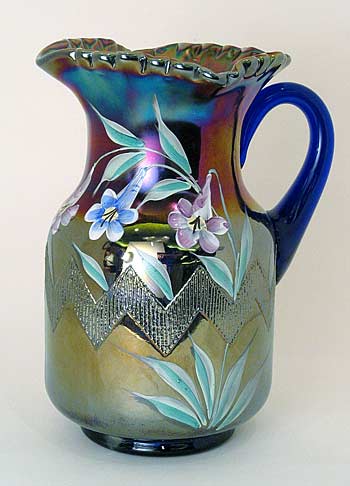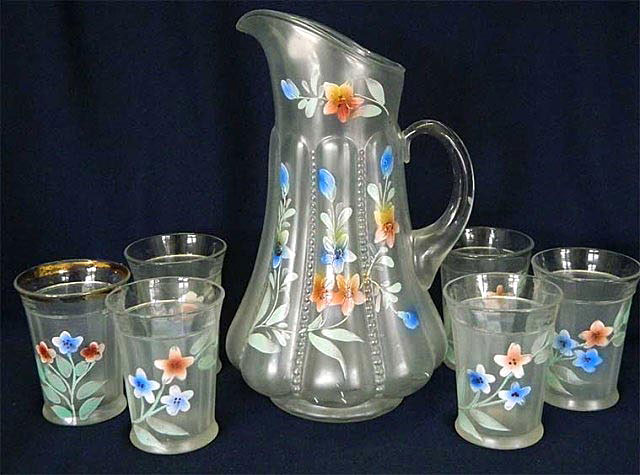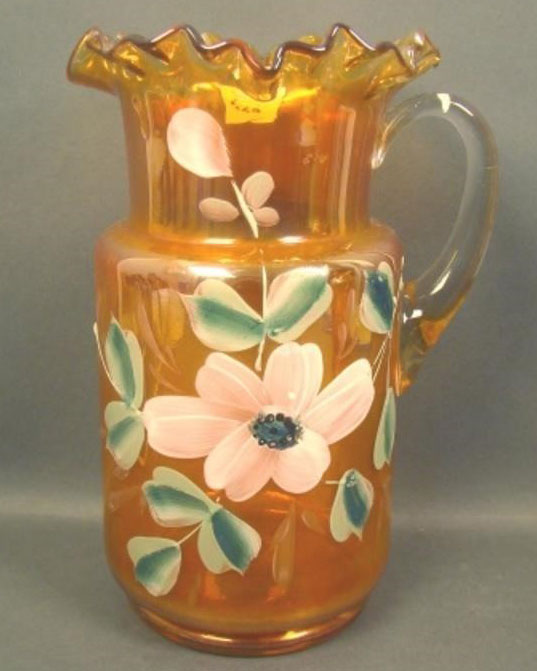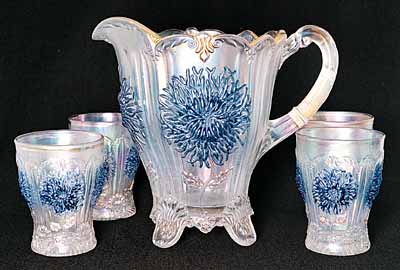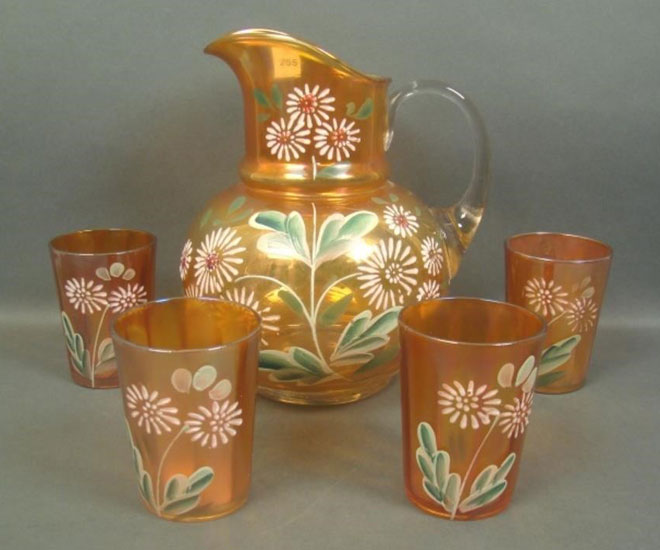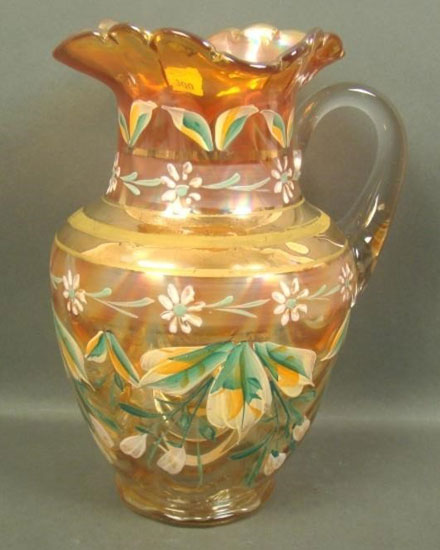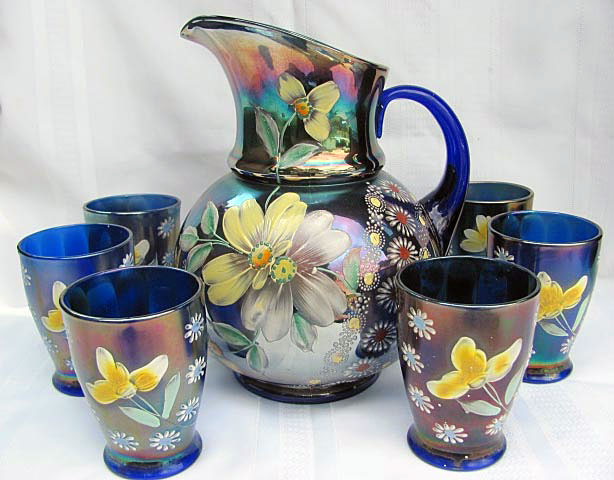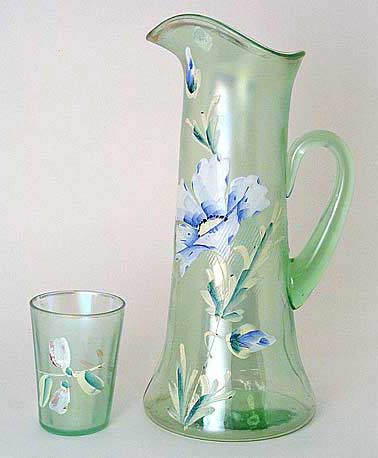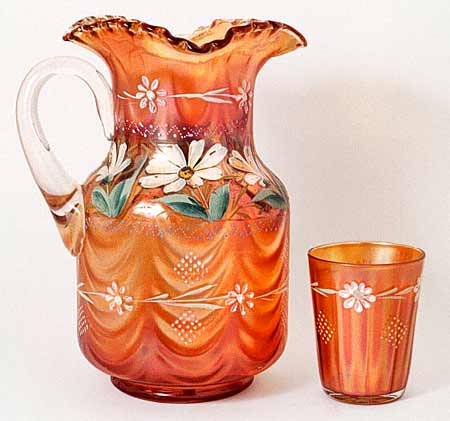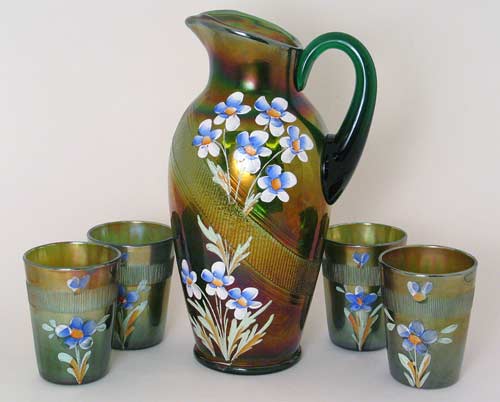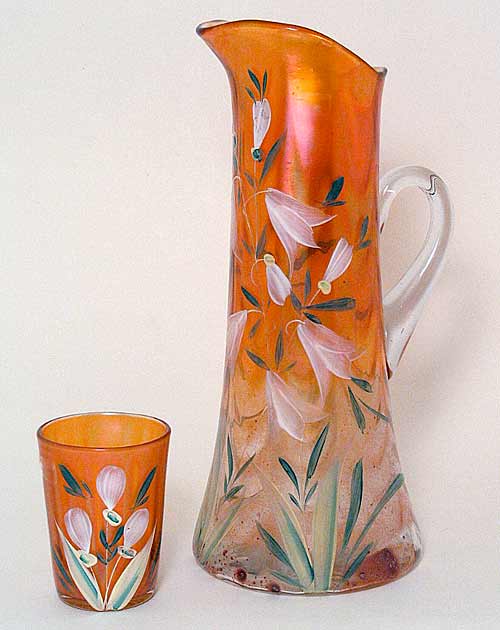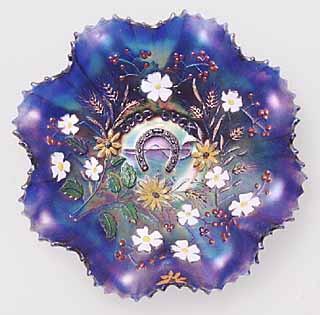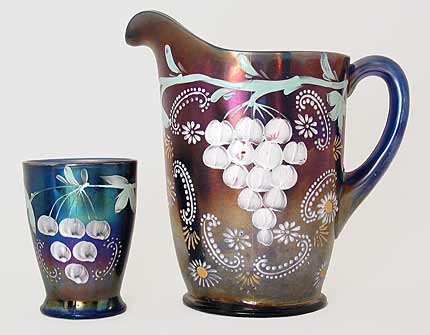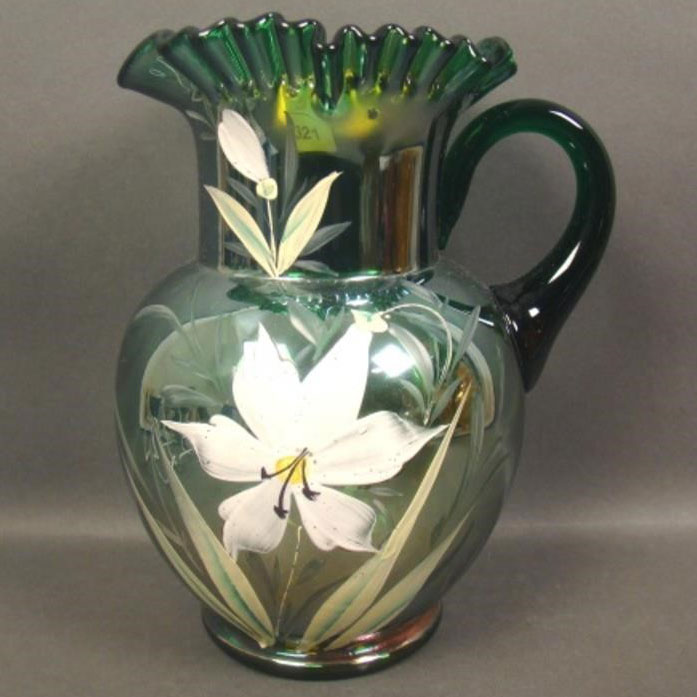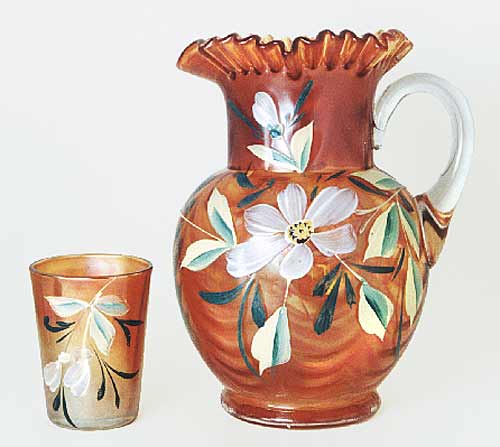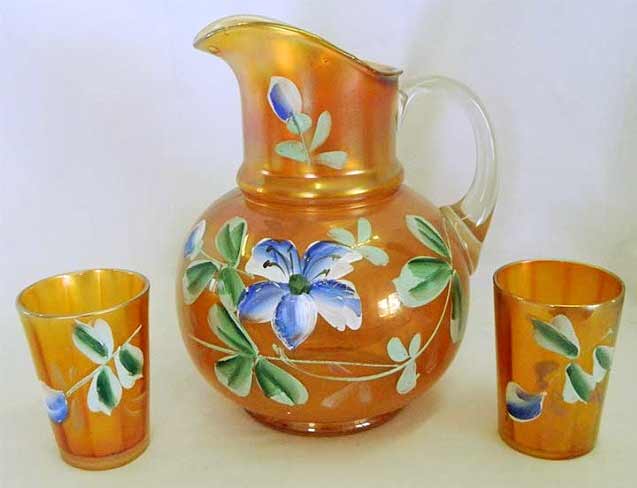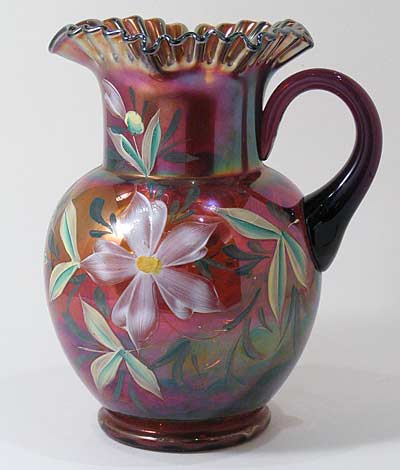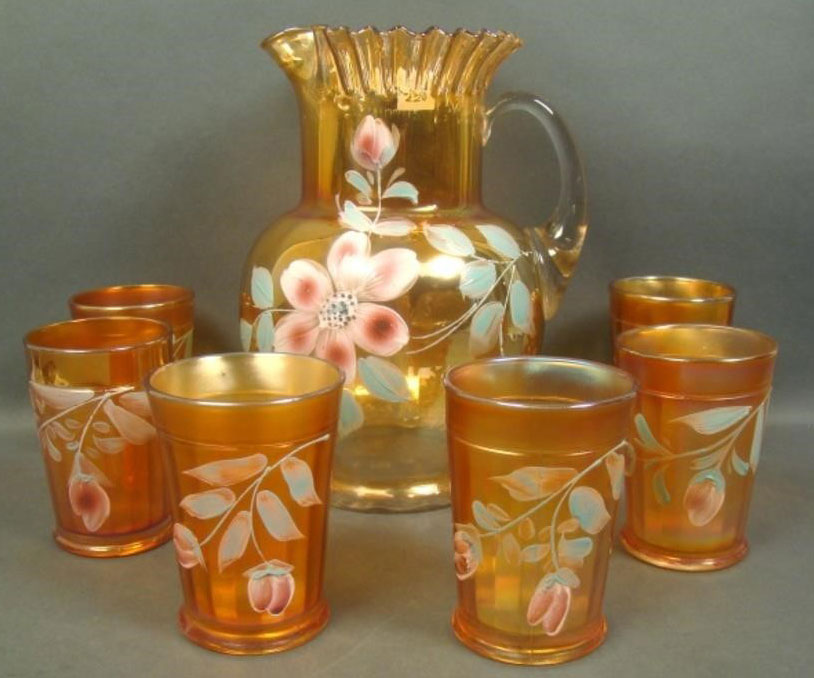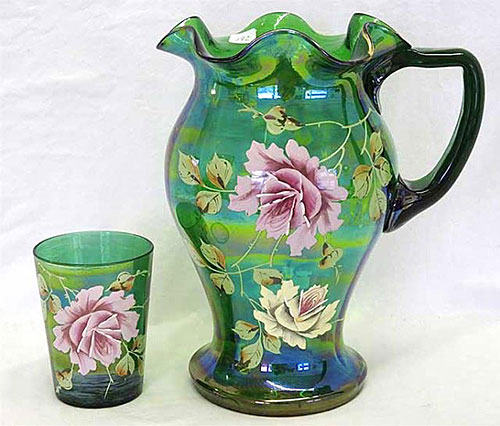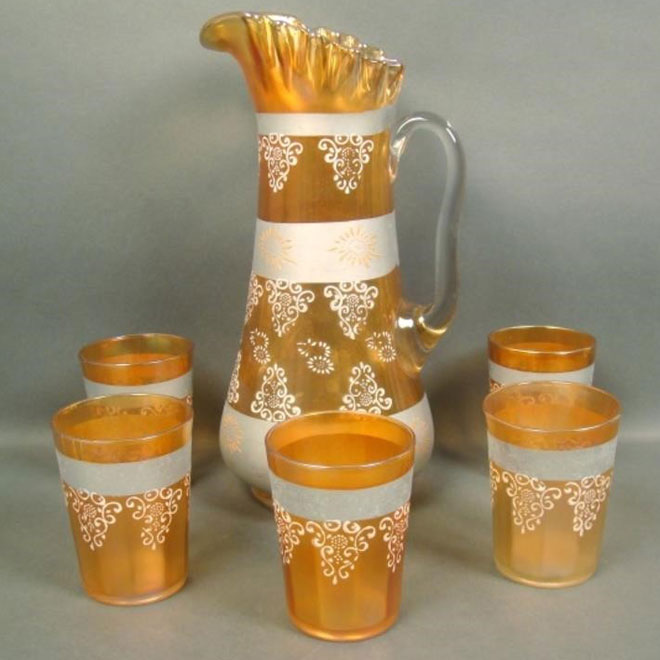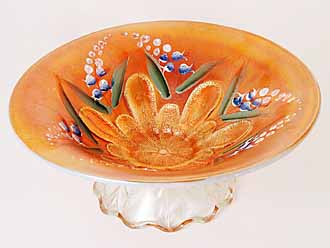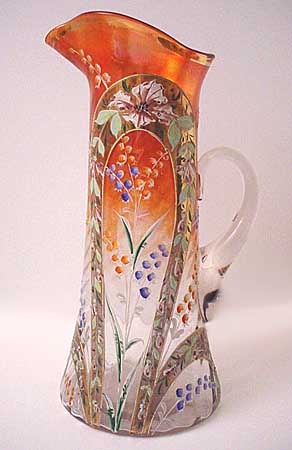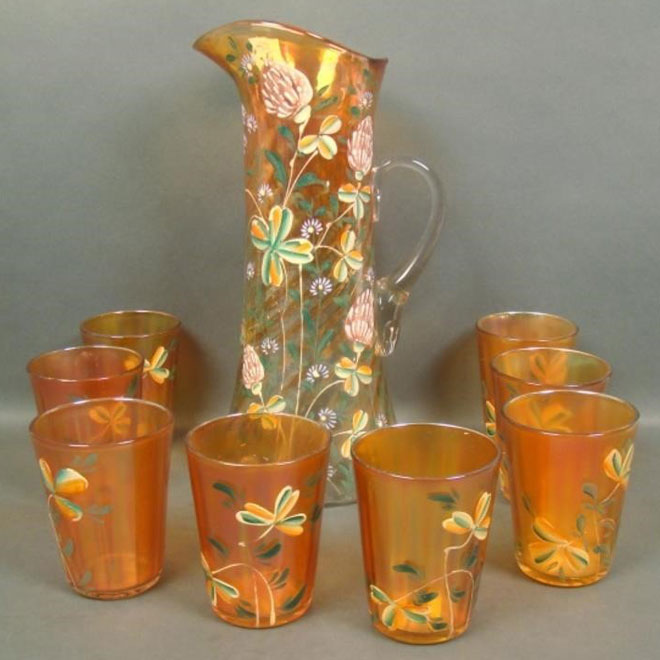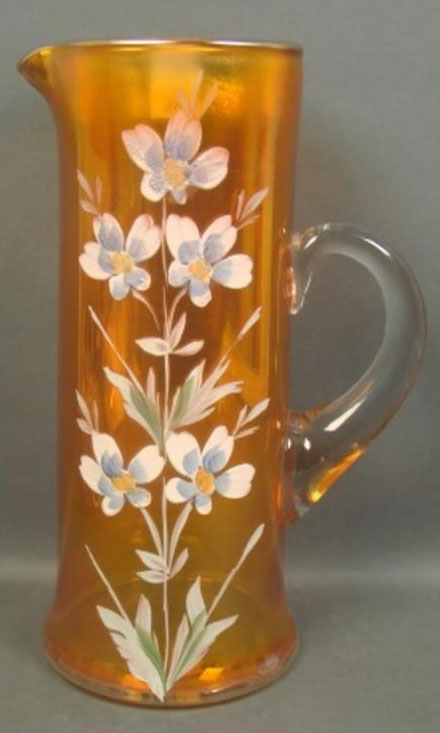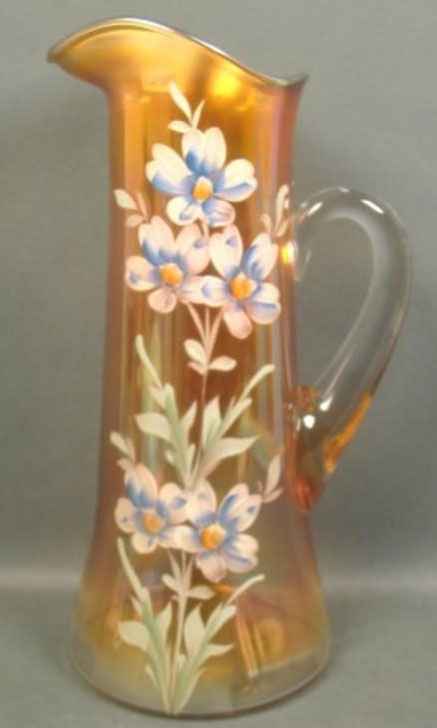From its inception, the Northwood factory marketed decorated glassware. Frank L. Fenton joined the Northwood decorating department in the summer of 1897 and he, along with his brother John Fenton, founded the Fenton Art Glass Company in 1905 in an old glass factory building in Martins Ferry, Ohio. Fenton began by painting decorations on glass blanks made by other glass manufacturers but were soon making their own glass to decorate. So decorated glass was an important part of carnival glass makers line of business. When these factories started to make carnival glass around 1907, it was only natural that this glassware also got decorated.
For more information, please read Cecil Whitley's book "The World of Enameled Carnival Glass Tumblers".
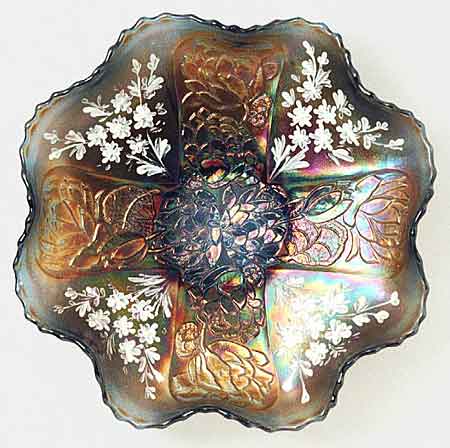
Absentee Lotus and Grape - This bowl lacks the alternating clusters of grapes. In their place are hand decorated flowers. It is thought that this was done in the factory.


Anemone - This set is thought to be by Fenton. It is found on a cylindared shape pitcher in marigold. The flowers can either be white or pink as shown in the two photos.
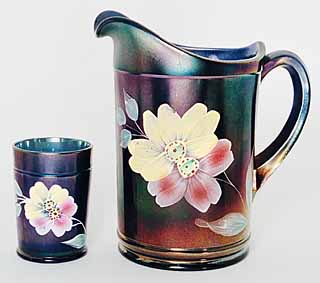
Apple Blossoms Water Set - The decorated flower design is easy to distinguish from others as it is the only one with large overlapping blossoms. Very few pieces in the pattern come up for sale. Blue is the only color known. A cannonball style pitcher is also known.

Apple Blossoms Table Set - The same decoration is found on this table set as the Apple Blossoms Water Set. A berry set in blue is also known.
